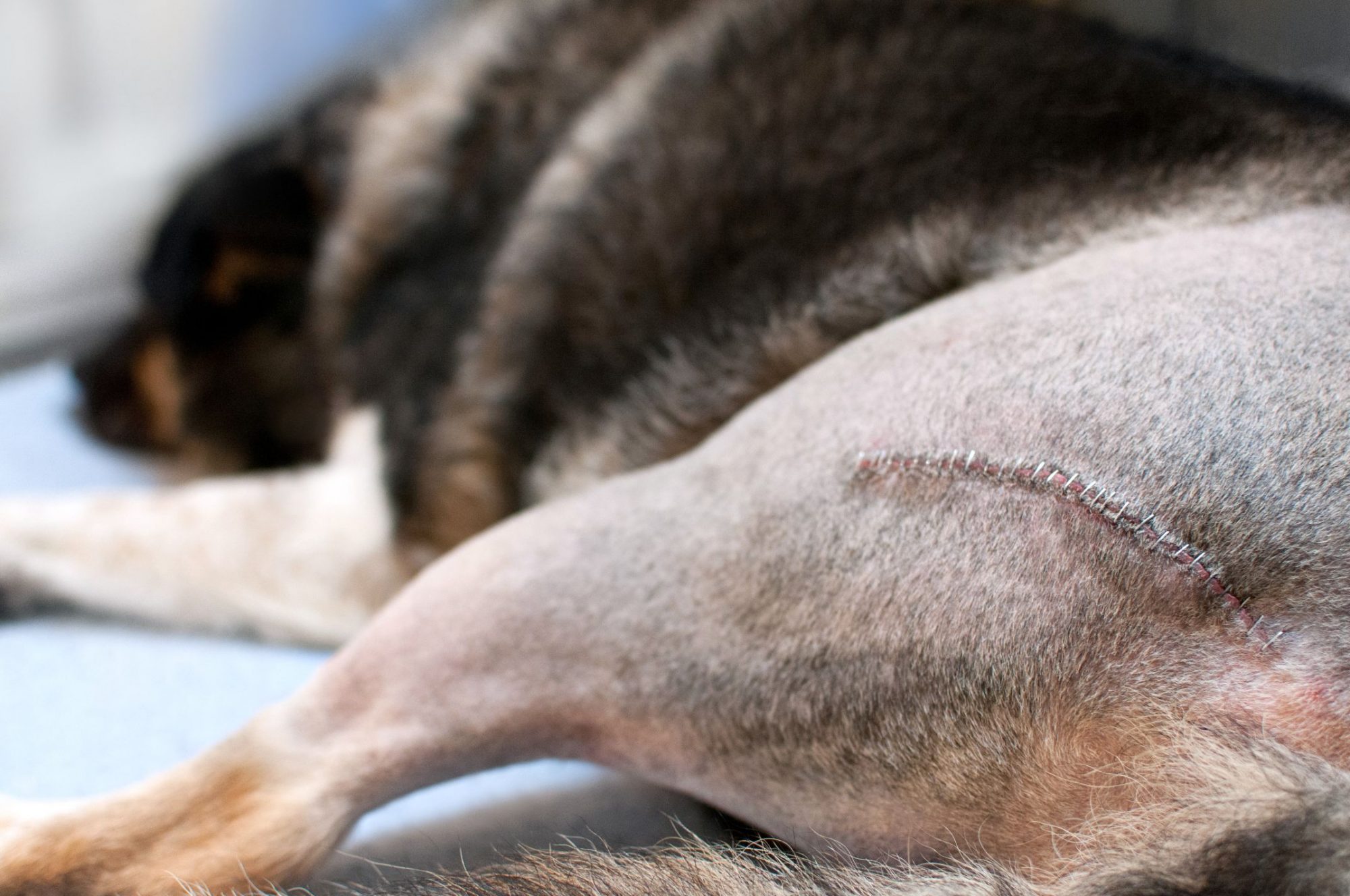Understanding Canine Hip Dysplasia

Hip dysplasia in dogs is a common canine affliction, but one not a lot of pet owners truly understand. Thankfully, though, with an expert resource like Curem Veterinary Care at your disposal, you don’t have to understand it on your own.
Understanding Canine Orthopedic Conditions
Orthopedics is the branch of medicine that deals with bones and joints. There are many bones and joints in the feline and canine body, and many different injuries and disease processes that affect them.
Some orthopedic problems, such as osteoarthritis, are acquired with wear and tear over time or a broken bone due to trauma. Other canine orthopedic conditions are congenital or developmental, meaning they occur during the formation and maturation of the pets bones and joints.
Canine hip dysplasia is a relatively common developmental condition most often diagnosed in large breed dogs. This hip joint malformation in dogs is most often seen in breeds like German shepherds, labrador retrievers, rottweilers, and St. Bernards, and has a genetic component. Any breed (and even cats) can be affected by hip dysplasia, however.
The hip joint is a ball and socket, which consists of the ball of the femur and socket in the pelvis. If these two structures don’t match up properly, serious consequences are possible. Laxity and instability in a malformed joint can lead to abnormal forces on the joint and eventual development of arthritis.
Signs of Hip Dysplasia in Dogs
While hip dysplasia is present in dogs from an early part of their life, it may not be as obvious in a younger dog as it is in an older dog. Symptoms might include:
- Limping in one or both rear limbs (may be intermittent)
- Bunny-hopping
- Slow to rise
- Clicking sounds in hips
- Shifting weight a lot
- Exercise intolerance/tires quickly
- Limping after exercise
- Decreased muscle tone in rear limbs (more chronic)
- Hard time jumping up or climbing stairs
It is not uncommon for a young dog to exhibit minimal or no symptoms until later in life.
Diagnosis and Treatment Options
It is possible to avoid hip dysplasia in dogs altogether by selecting dogs from breeding lines without the condition, and encouraging healthy growth by feeding an appropriate diet labeled for growth in appropriate amounts.
If hip dysplasia is suspected, a physical examination by our veterinary team and radiographs (X-rays) can typically confirm the diagnosis.
If your pet is diagnosed with hip dysplasia, there are options. For milder cases, good weight management, joint support, and strengthening exercises can help to keep your pet functional and comfortable.
For dogs with more severe hip changes, there are surgeries that may provide benefit. In particular, young dogs with active lifestyles may be good candidates for these surgeries. They include a total hip replacement similar to those done in people and a femoral head ostectomy (FHO) in which the ball and socket joint is removed and recreated with scar tissue.
Older pets affected by hip dysplasia may benefit from pain management, joint support, and strengthening exercises through modalities like medications, nutraceuticals, therapeutic laser, acupuncture, and rehabilitation therapy.
When pets are diagnosed with orthopedic problems, there is no one-size-fits-all treatment. Rather, we are happy to work together to find the best way to manage your pet’s needs. If you think your pet may have an orthopedic issue, contact us for information on how we can get started helping your furry friend.
